In 1910, construction of the Borden Brook Reservoir (2.5 billion gallons) was completed and this became the City’s primary supply. The Ludlow Reservoir continued to be the primary supply for Ludlow and a secondary supply for Springfield. Borden Brook Reservoir served as Springfield’s primary supply until 1931, when Cobble Mountain Reservoir was built, and this 22.8-billion gallon reservoir has been the City of Springfield’s primary water supply source ever since. Borden Brook Reservoir is still an active water source and feeds into the Cobble Mountain Reservoir. The Ludlow Reservoir is maintained as an emergency water supply.
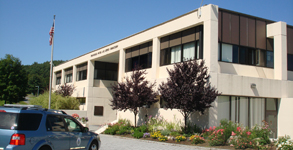 Treatment
Treatment
Water flows from the Cobble Mountain Reservoir to the West Parish Water Filtration Plant in Westfield, where it is filtered and treated to protect public health. The filtration process removes particles and impurities from the water. Then, the pH of the water is adjusted and corrosion inhibitors are added to protect home plumbing. Finally, chlorine is added to disinfect the water before it flows into the transmission and distribution systems for delivery to our customers.
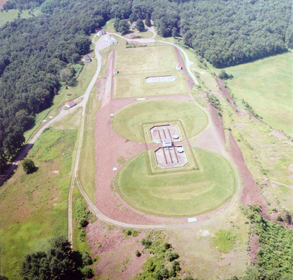 Storage
Storage
After leaving the West Parish Water Filtration Plant, the water travels through three transmission mains to our four storage tanks located on Provin Mountain in Agawam. The four tanks have a total storage capacity of 60 million gallons.
Distribution
Water flows by gravity from the Provin Mountain storage tanks to the majority of the Springfield and Ludlow system. The Commission utilizes pump stations to provide increased pressure to higher elevation areas and surrounding communities.
The Springfield Water and Sewer Commission is responsible for your drinking water from the watershed and reservoir, through treatment, storage and distribution to your tap. In addition to serving the residents of Springfield and Ludlow, the Commission provides wholesale water to the communities of Agawam, East Longmeadow, and Longmeadow and provides partial service or peak service to Southwick, Westfield, and West Springfield. The Commission can also provide water on an emergency basis to Chicopee and Wilbraham.
Power Generation
The Commission owns Cobble Mountain Hydro-Power Station which is located in the Town of Granville, Massachusetts. The Station utilizes stored water head energy at the Cobble Mountain Reservoir Dam to generate green power while water is conveyed to the Commission’s West Parish Water Filtration Plant. The generated power is transferred and sold to the ISO New England electricity market. The Plant can produce up to 33 Megawatts-hour at full capacity through three turbine generators; two rated at 13.6 Megawatts and one at 5.7 Megawatts. In FY 2012, the plant output was 30,400 Megawatts. The Commission controls and limits the amounts of water available for power generation to ensure safe-yield water storage under various seasonal conditions and drought scenarios.
The Commission is currently in a five-year agreement with the City of Holyoke Gas & Electric Department (HG&E) to manage, operate and maintain the Station. The agreement expires June 30, 2016. The Commission has also entered into a separate five-year parallel agreement with HG&E to provide marketing agency and facilitation of power sales into the ISO-New England market.
Over the last year, the Commission has spent approximately $142,000 for mechanical, structural, and inspection works at the station; and is currently planning for a five-year inspection of the power tunnel and penstocks, a major overhaul of generation Unit #3, and structural rehabilitation works within the next three years.
Water System Historical Photos
Click images to enlarge.
Wastewater Collection
The Springfield Water and Sewer Commission services approximately 37,200 sewer accounts. The sewer collection system consists of 151 miles of combined sewer (sewer and stormwater), 310 miles of separated sewer, 23 combined sewer overflow outfalls, 11,000 manholes, and 33 pumping stations. Wastewater is conveyed to the Springfield Regional Wastewater Treatment Facility (SRWTF) located on Bondi’s Island off Route 5 in Agawam.
Wastewater Treatment
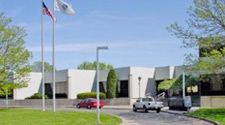 The SRWTF treats wastewater from the households, businesses, and industries within Springfield and surrounding member communities, including Agawam, East Longmeadow, Longmeadow, Ludlow, Wilbraham, West Springfield, and a small section of Chicopee. The SRWTF is designed to treat up to 67 million gallons of wastewater per day. Currently, a daily average of 40-42 million gallons of wastewater is cleaned, treated, and returned to the Connecticut River. The SRWTF is the second largest treatment facility in New England.
The SRWTF treats wastewater from the households, businesses, and industries within Springfield and surrounding member communities, including Agawam, East Longmeadow, Longmeadow, Ludlow, Wilbraham, West Springfield, and a small section of Chicopee. The SRWTF is designed to treat up to 67 million gallons of wastewater per day. Currently, a daily average of 40-42 million gallons of wastewater is cleaned, treated, and returned to the Connecticut River. The SRWTF is the second largest treatment facility in New England.
The SRWTF is owned by the Commission and is currently operated and maintained by SUEZ Water Environmental Services, Inc. under a twenty-year Service Agreement with the Commission. Treatment consists of two major steps: primary treatment and secondary treatment. During the primary treatment stage, sand, grit, and solids are removed from the untreated sewage. The secondary treatment phase uses bacteria to further break down the dissolved solids, which produces sludge. The treated wastewater is then separated from the sludge and cleansed and disinfected before being released into the Connecticut River in compliance with the facility’s National Pollution Discharge Elimination System (NPDES) permit issued by the USEPA and MADEP. SUEZ Water Environmental Services, Inc. is responsible for the biological treatment, disinfection and chlorination of the wastewater that flows through the plant.
Effluent flow to the Connecticut River is tested and monitored daily at the facility’s on-site state certified testing laboratory to ensure that required permit limitations are not exceeded and the water can be discharged safely to the Connecticut River without harming the environment. The solids, or sludge, resulting from the treatment process are trucked to Municipal Solid Waste Landfills for disposal.
If you would like more information about how wastewater is treated in our community, please contact the SRWTF at 413-732-6501.
Bondi’s Island…The History Behind the Name
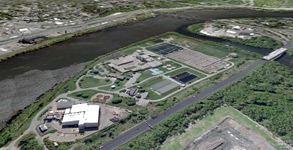 From his native Italy, Luigi Bondi came to Springfield with his wife and children in the late 1800’s. With a successful venture in the produce business under his belt, he started acquiring land in and around Springfield. He purchased an Island (Bondi’s Island) on the Connecticut River in 1889 for $100.00. It was common practice in those days to measure real estate in approximations to local landmarks, unfortunately landmarks change as time goes on so it is not known for certain where the original Bondi’s Island lies. Speculation and local lore has the Island under the west end of the memorial bridge. So why is the Springfield Regional Wastewater Treatment Facility (SRWTF) nicknamed “Bondi’s Island” Locals have said that Luigi Bondi also purchased land in West Springfield surrounded on three sides by water the (Connecticut and Agawam Rivers). These plots of land are guessed to be what was known as Big Island and Hermit Island. Hermit Island was also known to some as Little Island or Cambell’s Island. He had peach trees on the island for his produce business and had plans to make a recreation area one day. As time went on, the course of the river may have changed or branches may have been filled in or dried up and the two islands became one. This is the plot of land that Luigi was said to have purchased and is the current location of the SRWTF.
From his native Italy, Luigi Bondi came to Springfield with his wife and children in the late 1800’s. With a successful venture in the produce business under his belt, he started acquiring land in and around Springfield. He purchased an Island (Bondi’s Island) on the Connecticut River in 1889 for $100.00. It was common practice in those days to measure real estate in approximations to local landmarks, unfortunately landmarks change as time goes on so it is not known for certain where the original Bondi’s Island lies. Speculation and local lore has the Island under the west end of the memorial bridge. So why is the Springfield Regional Wastewater Treatment Facility (SRWTF) nicknamed “Bondi’s Island” Locals have said that Luigi Bondi also purchased land in West Springfield surrounded on three sides by water the (Connecticut and Agawam Rivers). These plots of land are guessed to be what was known as Big Island and Hermit Island. Hermit Island was also known to some as Little Island or Cambell’s Island. He had peach trees on the island for his produce business and had plans to make a recreation area one day. As time went on, the course of the river may have changed or branches may have been filled in or dried up and the two islands became one. This is the plot of land that Luigi was said to have purchased and is the current location of the SRWTF.
The first wastewater treatment plant was built in 1938-39 and at the time, was a state-of-the-art primary treatment plant that contributed greatly to the quality of the Connecticut and Chicopee rivers. However, it was not until 1960 that the sewage generated in Springfield went to the treatment facility.
In 1968, the land northwest of the treatment plant started being used as a landfill, and by now more of the water being treated at the treatment plant was coming from surrounding communities. As a result of the 1972 Clean Water Act and increased demand being placed on the treatment plant, a new state-of-the-art regional secondary wastewater treatment facility (the SRWTF) was put online in 1977.
Since 1988, five other waste management facilities have been established on Bondi’s Island. This is a far cry from the recreational park Luigi Bondi had envisioned a century ago, but it is hoped he would advocate the use of his land as a center of environmental protection.
 Treatment
Treatment Storage
Storage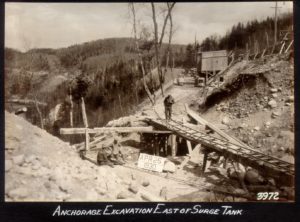
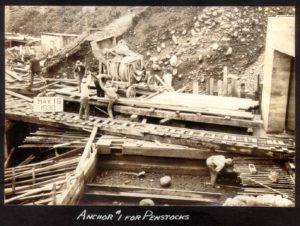
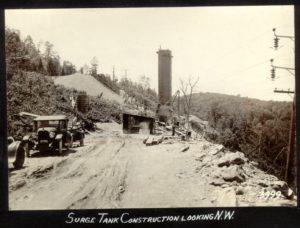
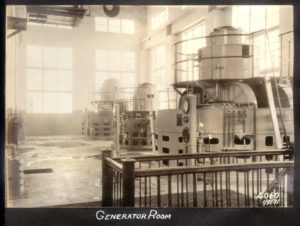
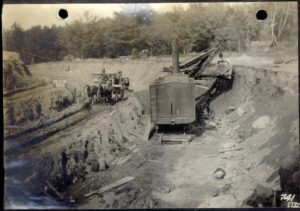
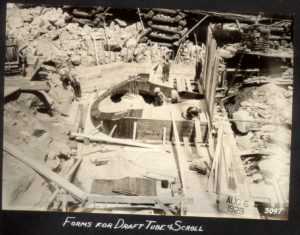
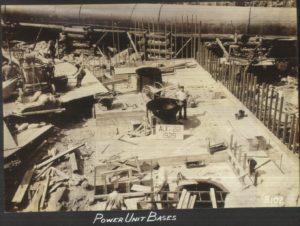
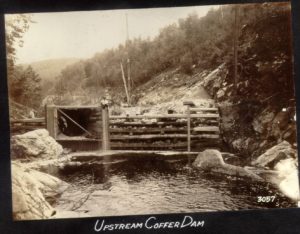
 The SRWTF treats wastewater from the households, businesses, and industries within Springfield and surrounding member communities, including Agawam, East Longmeadow, Longmeadow, Ludlow, Wilbraham, West Springfield, and a small section of Chicopee. The SRWTF is designed to treat up to 67 million gallons of wastewater per day. Currently, a daily average of 40-42 million gallons of wastewater is cleaned, treated, and returned to the Connecticut River. The SRWTF is the second largest treatment facility in New England.
The SRWTF treats wastewater from the households, businesses, and industries within Springfield and surrounding member communities, including Agawam, East Longmeadow, Longmeadow, Ludlow, Wilbraham, West Springfield, and a small section of Chicopee. The SRWTF is designed to treat up to 67 million gallons of wastewater per day. Currently, a daily average of 40-42 million gallons of wastewater is cleaned, treated, and returned to the Connecticut River. The SRWTF is the second largest treatment facility in New England. From his native Italy, Luigi Bondi came to Springfield with his wife and children in the late 1800’s. With a successful venture in the produce business under his belt, he started acquiring land in and around Springfield. He purchased an Island (Bondi’s Island) on the Connecticut River in 1889 for $100.00. It was common practice in those days to measure real estate in approximations to local landmarks, unfortunately landmarks change as time goes on so it is not known for certain where the original Bondi’s Island lies. Speculation and local lore has the Island under the west end of the memorial bridge. So why is the Springfield Regional Wastewater Treatment Facility (SRWTF) nicknamed “Bondi’s Island” Locals have said that Luigi Bondi also purchased land in West Springfield surrounded on three sides by water the (Connecticut and Agawam Rivers). These plots of land are guessed to be what was known as Big Island and Hermit Island. Hermit Island was also known to some as Little Island or Cambell’s Island. He had peach trees on the island for his produce business and had plans to make a recreation area one day. As time went on, the course of the river may have changed or branches may have been filled in or dried up and the two islands became one. This is the plot of land that Luigi was said to have purchased and is the current location of the SRWTF.
From his native Italy, Luigi Bondi came to Springfield with his wife and children in the late 1800’s. With a successful venture in the produce business under his belt, he started acquiring land in and around Springfield. He purchased an Island (Bondi’s Island) on the Connecticut River in 1889 for $100.00. It was common practice in those days to measure real estate in approximations to local landmarks, unfortunately landmarks change as time goes on so it is not known for certain where the original Bondi’s Island lies. Speculation and local lore has the Island under the west end of the memorial bridge. So why is the Springfield Regional Wastewater Treatment Facility (SRWTF) nicknamed “Bondi’s Island” Locals have said that Luigi Bondi also purchased land in West Springfield surrounded on three sides by water the (Connecticut and Agawam Rivers). These plots of land are guessed to be what was known as Big Island and Hermit Island. Hermit Island was also known to some as Little Island or Cambell’s Island. He had peach trees on the island for his produce business and had plans to make a recreation area one day. As time went on, the course of the river may have changed or branches may have been filled in or dried up and the two islands became one. This is the plot of land that Luigi was said to have purchased and is the current location of the SRWTF.